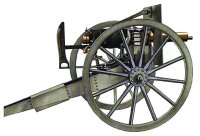_mofo Do you know your weapons
Episode 4 by AZsithlord_mofo
blatantly copied from world.guns.ru
"Ah the Machine gun, force multiplier, a weapon that can turn one soldier into a squad can suppress the enemy from distance in order for his comrades to advance.
My experience with the military was colored wonderfully by the M60, a monster of a weapon by today's standard. I learned by being the team gunner (we had 3-4 per squad in the MP corps) that this monster could be used from simple suppression to the more complex clearing of buildings (within and without) from full-auto glory to a single shot killer. Good teachers and practice could make it unbelievably accurate, and a good steady position could control an area without equal.
Ah how i miss the "Hog" and the 27 pounds of weapon it was, not counting the 200 to 600 rounds usually on my assistant gunner and myself. (yeah, 1200 rounds of wreckage).
my experience was limited but enjoyable with the M249 SAW. it burned through ammo far to quickly for my tastes, but then you got to carry twice as much when fielding it"
Machine guns

First machine gun was invented in USA by Hiram
Maxim in 1883 and patented two
years later. First wars Maxims' MGs was taken into was colonial war in South
Africa and Russia-Japan war
(1904-1905). During WW 1 all sides used many machineguns, both heavy
(on wheels or tripods) and ligth (on bipods). After WW1 MGs become a standart
issue as a squad weapons for ground and anti-aircraft warfare.
Most widely used MGs were Maxims (in many modifications), Brownings M1919,
Gotchkiss. Between two World Wars first appeared large caliber MGs (as a rule,
its caliber was .50", or 12.7mm). Best examples - Belgian/American Browning M2
and Soviet DShK-12.7. During WW2 Germans developed first mass "universal" MG
(Mg42, later - Mg43), which can be used as a "ligth" MG on bipod or as a "heavy"
one on tripod against ground or air targets. This MGs set the trend, so almost
all modern "medium" MGs such as Belgian MAG, American M60, Russian PKM may be
used on bipod or tripod, as needed.
Today the main role of all MGs is to provide
sustained firepower for troops against enemy troops and unarmored targets. Heavy
(.50/12.7mm) MGs can deal with lightly armored targets such as APCs, recon
vehicles, helicopters.
Almost every infantry squad in the world has at
least one light MG. Russian squad usually equipped with one RPK-74 MG, US Army
squad - with two M249 SAWs. Medium MGs usually are installed on vehicles (APCs,
Jeeps, tanks) and used in infantry on ground mounts on troop and company level.
Heavy MG are sometimes used as anti-aircraft weapons on tanks, main weapons on
APCs and recon veichles and company level support weapons in infantry.
Almost all heavy and medium MGs, and many light
ones, have quick interchangeable barrels. Usually every MG comes from factory
with one or two spare barrels, wich may be changed in battle environment within
seconds. This feature provides ability to sustain intensive fire for longer time
while one barrel is being used, the spare one can be cooled - intensive heating
during the fire can dramatically decrease accuracy and reduce the
lifetime of the barrel.

The feeding systen of almost all medium and heavy
MGs is build around belted (or linked) ammunition. Early belts were made from
textile, modern belts are made from metal. Metal belts may be "disintegrated" or
non-disintegrated.

In the disintegrated belt the metal links are
linked ty each other by the cartridge. When feeding system of the MG removes
cartridge to feed the MG, links fall apart , thus "disintegrate" the
single belt into the links. In non-disintegrated belts links are connected by
the means of special details, and belts remains "one piece" even when all
cartridges are removed. Usual belt capacity for heavy MG is 50-100 rds, for
medium and light ones - 100-250 rds.

Light MG often employs the magazine feeding
system, using the standard 'assault-rifle' style box magazines for 30-45 rounds
each or hi-capacity drum or dual drum (Beta-C and others) magazines for 50-100
rounds each. In light MGs, made from assault rifles, magazines usually
exchangeable between LMG and assault rifle. Good examples are AK and RPK
Russian, Steyr AUG Austrian and L85/L86 British systems. Some light MGs such as
FN Minimi/M249 are dual-feed and can use belts or box magazines without any
modifications.

Very Good work !! Would like to see more foot notes if you want a better grade!!!
ReplyDelete